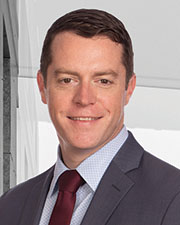Civil litigation basics: Final assault - Trial concludes - by Michael Brangwynne

Fletcher Tilton
This is the sixth article in a series on the basics of the civil litigation process. If you are interested in reading the first five installments, they are available on Fletcher Tilton’s website under the Knowledge Library.
Presentation of Evidence
As discussed in the previous installment of this series, once a jury has been selected (assuming the parties are proceeding with a jury trial) and opening statements have been given by counsel for each side, the parties will then begin to present their cases through the submission of evidence. The plaintiff, as the party with the burden of proof, will present his case first, followed by the defendant.
Due to rules restricting the admission of out-of-court statements, also known as hearsay, into evidence, a large part of the evidence submitted in any trial will be live testimony given by witnesses. Witnesses are important not only for their testimony as to things that they personally saw, heard or otherwise perceived, but also to authenticate documentary evidence. For example, in order to submit photographs of defective work on a construction project into evidence, it will be necessary for a witness to testify that the photographs are fair and accurate depictions of the conditions at the construction site as of a certain date.
The parties may also stipulate to the authenticity and admissibility of certain evidence that is not in dispute, such as a copy of the contract between the parties, or invoices and change orders that were exchanged on a project between the parties. Other documents, such as relevant and certified medical records, are deemed authentic and admissible by law.
Finally, we saw in the third installment of this series the importance of experts who will provide opinion testimony on issues of scientific, technical or other specialized knowledge. Where such issues arise, it is common for each party to have one or more expert witnesses offering contradictory opinions, resulting in a “battle of the experts.” A plaintiff-owner’s expert may opine that defects at a construction project were caused by poor workmanship on the part of a subcontractor, whereas the defendant-contractor’s expert may opine that the defects arose from faulty architectural plans provided by the owner. The jury is left to decide which expert’s opinion to credit as reliable and correct.
Closing Arguments
After all parties have had an opportunity to present their case, counsel for each party will make their closing argument. This is an opportunity for the lawyers to persuade the jurors to adopt their view of the significance of the evidence that has been presented, and their theory of the case. Closing arguments may not contain any new information that was not presented as evidence during the trial and, like opening statements, the closing arguments themselves are not evidence.
Jury Charge and Verdict
After closing arguments, the judge will instruct the jurors on the law that they must apply in reaching a verdict. This is known as the jury charge. The jury will also be instructed on how to conduct their deliberations and will be given a verdict slip which consists of questions that the jury--working together--must answer to determine whether the parties have proven their claims.
The jurors will then be secluded to conduct their deliberations. This process can take days or even weeks depending on the complexity of the case. The jury will not reach a verdict in a civil trial until and unless ten of the twelve jurors agree on answers to the questions that have been presented to them. Once a verdict has been reached, the jury will inform the court, and the jury’s verdict will be read aloud in open court. The jurors will then be discharged.
The announcement of a verdict and discharge of the jury marks the end of the trial process – but not necessarily the end of the litigation, as we will see in the final installment of this series on post-trial motions and appeal.
Michael Brangwynne is a civil litigation attorney at Fletcher Tilton, Boston and Worcester, Mass.
Newmark negotiates sale of 10 Liberty Sq. and 12 Post Office Sq.


How COVID-19 has impacted office leasing - by Noble Allen and John Sokul

Four tips for a smooth 1031 Exchange - by Bill Lopriore

Five ways to ruin a Section 1031 Like-Kind Exchange - by Bill Lopriore








